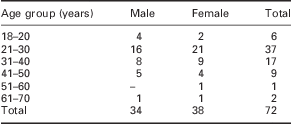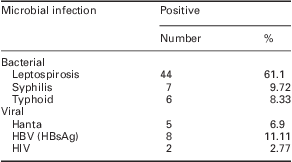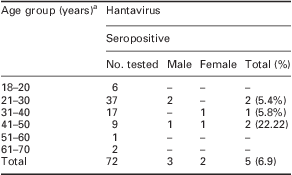Introduction
India as a whole has long been characterized with considerable heterogeneity in terms of religion, territory, language and caste. During the colonial period, the British enumerated and classified India's population into groups, one of which was the category of tribal or ‘adivasi’ (indigenous people). Before outside intervention, many tribal population had self-regulating economic and political systems (Betteille, Reference Betteille1986).
In Tamil Nadu state, the Irula tribe is the most numerous and is confined to different locations (Watkins et al., Reference Watkins, Prasad, Naidu, Rao, Bhanu, Ramachandran, Das, Gai, Reddy, Reddy, Sethuraman, Bamshad and Jorde2005). Irula tribes are forest dwellers, who are often referred to as ‘snake catchers’, and are dependent on the forest for their daily needs including food, shelter, instruments, medicine and even clothing. They are also referred to as ‘rat catchers’ who eat cooked or fried rats along with the staple food rice. However, it is no longer their means of living, and over the years because of various forest acts and legislations of the central and state governments some of them have now moved out of the forest and earn their living by doing coolie work in the agricultural fields or in the rice mills (Thakar, Reference Thakar2008). Tattooing is still frequently seen, especially on the forehead (Jayanth, Reference Jayanth2001). Their sexual practice includes pre-marital and extra marital practices.
Lack of access to health-care facilities is the main factor discouraging health seeking in tribal communities in India. Although several studies have been carried out on common diseases and health-care activities among general population in India, only few studies have been carried out on tribal population (Hallikeri, Reference Hallikeri2008). In Tamil Nadu, so far only few disease prevalence studies have been carried out in tribal communities either in Nilgiri tribes or in Kolli Hill tribes (Kalaivani et al., Reference Kalaivani, Rajendran, Thyagarajan, Rajesh, Hari, Selvakumar, Ramkumar, Anbalagan and Senthil Kumar2001; Rajendran et al., Reference Rajendran, Althaf Hussain and Thyagarajan2001).
Therefore, this study is focused on the health care among the Marakkanam Irula tribal population, which is near the Bay of Bengal costal area of Tamil Nadu state, India. On the basis of their social and environmental facts, this study was carried out to screen the Irula Tribals for seroprevalence of leptospirosis and hantavirus (because of the snake and rat catching profession), typhoid (because of the unhygienic environment) and syphilis, Acquired immune deficiency syndrome (AIDS) and hepatitis B (because of their sexual behavior).
Material and methods
Study population
The Irula communities in Tamil Nadu are located and identified using the information obtained from the Adi Dravidar and Tribal welfare department of the Government of Tamil Nadu. The study area, Marakkanam, is a well-connected small village situated in Vanur constituency on the east coast of Tamil Nadu (Figure 1) where a considerable number of Irula population live in few hamlets of huts. According to the census data of Tamil Nadu, the population size of the Irulas was 1612 (census 2001). Convenient sampling technique was adapted for this study. The collected sample size is ∼4.5% of the total Irula population of that area. A health camp was organized for the welfare of this community and blood samples were collected from those who were willing and ready to sign the consent form. The inclusion criteria were: being a native of Marakkanam and age 18 years and above; eventually, 72 adults were recruited for this study.

Figure 1 The study areas are indicated with an arrow mark
Data and sample collection
A medical camp was organized at the nearest School premise on 12th February 2008 between 10am and 5pm with the help of Tribal leaders so that the Irula community could undergo medical and dental health checkups, as well as diagnostic tests. Demographic, sexual behavior, risk factors and other data were collected using structured questionnaire, and pro forma was filled up.
Blood samples of 5 ml each were collected from individuals, and separated serum samples for serological study was transported to the Microbiology laboratory in cold chain. The serum samples were labeled and stored in standard screw-capped leak-proof vials and kept at −70°C until processed.
Serological studies
Serum samples were analyzed for exposure to infective microbes by serology (Kalaivani et al., Reference Kalaivani, Rajendran, Thyagarajan, Rajesh, Hari, Selvakumar, Ramkumar, Anbalagan and Senthil Kumar2001) for certain bacterial infections (leptospirosis, typhoid and syphilis) and viral infections (hanta, hepatitis B and human immunodeficiency virus (HIV)).Typhoid exposure was diagnosed by detecting antibody to Salmonella enterica typhi using a commercial rapid slide agglutination kit (Span Diagnostics Ltd, Surat, India); leptospirosis using a Patac Strain Macroscopic agglutination kit (Bio-Rad, Marnes-la-Coquette, France); syphilis by TPHA (Immutrep, Omega Diagnostic, Shreveport, UK); hantavirus antibody by the ELISA kit (Focus Tec, CA, USA); hepatitis B surface antigen (HbsAg) by the ELISA kit (Diasorin, Central Road Dartford, Kent, UK); and HIV by the ELISA kit (In Tech Products Inc, Xiamen, Fujian, China).
Results
Out of the 72 Irula tribes screened, 34 were men and 38 were women and the majority of them were in the age group of 21–30 years (Table 1). This study showed the overall seroprevalence of leptospirosis as 61.1%; typhoid exposure as 8.33%; syphilis as 9.72%; hantavirus as 6.9%; hepatitis B virus (HBsAg) as 11.11%; and HIV (1 and 2) as 2.77%(Table 2).
Table 1 Age and sexwise distribution of study participants in the Irula tribe

Table 2 Bacterial and viral seroprevalence in the Irula tribe (n = 72)

HBV = hepatitis B virus; HBsAg = hepatitis B surface antigen; HIV = human immunodeficiency virus.
A majority of Irulas (44 out of 72) had leptospiral antibody, which was more in women than in men. Among bacterial diseases studied, 6 out of 72 Irulas were seropositive for S. enterica typhi antibody, which was equal in men and women in the age group of 21–50 years (Table 3). The overall seroprevalence of syphilis was 9.72%, which was more in women than in men in the age group of 18–40 years (Table 4).
Table 3 Seropositivity for leptospirosis and enteric fever among the Irula tribe (n = 72)

Table 4 Syphilis by TPHA among the Irula tribal population (n = 72)

TPHA = Treponema pallidum haemagglutination.
Among the viral diseases screened in the Irula community, the seroprevalence of hantavirus was 6.9% in the age group of 21–50 years (Table 5); hepatitis B exposure was 11.11%, marginally higher (12.82%) in women in the age group of 21–50 years; HIV seropositivity was observed in two men (2.77%; Table 6). No co-infection was observed.
Table 5 Seroprevalence of hantavirus in the Irula tribe

aOnly those who are 18 years and above are recruited.
Table 6 HIV and HBsAg in Irula tribe (n = 72; 34 male and 38 female)

HBsAg = hepatitis B surface antigen; HIV = human immunodeficiency virus.
aOnly those who are 18 years and above are recruited.
Discussion
The present study aimed to create awareness on the health issues of the Irula tribal community by conducting a medical camp.
Among the bacterial diseases, serum samples were screened for leptospiral antibodies using the macroscopic agglutination test, which showed a seropositivity of 55.88% in men and 65.78% in women with an overall positivity of 61.1%. Similar studies conducted earlier in Iranian tribals showed a seroprevalence of 48.50% with higher seroprevalence in women (56.18%) compared with men (43.81%). This could be perhaps due to close contact of women with animals in tribal life in Iran (Ebrahimi et al., Reference Ebrahimi, Alijani and Abdollahpour2003), which is comparable with our present finding. According to Miller et al. (Reference Miller, Wilson and Beran1991), higher seroprevalence of human leptospirosis attributes to geographical factors or traditional life systems. As Irulas work and settle in open fields, exposure to rodents could be the reason for higher prevalence of leptospirosis in this community.
Enteric fever is a major health problem in India. In Asia, the mean incidence of enteric fever is estimated to be 900/100 000 people per annum. However, there is no published report on typhoid prevalence of enteric fever among tribal population in India. This is probably the first study that depicts the typhoid exposure in this population as being 8.33%, which will become the baseline data for this community.
In this study, a seroprevalence of 13.15% in women and 5.8% in men with an overall positivity of 9.72% was observed for syphilis by Treponema pallidum haemagglutination in Irula tribes. This was in conformity with the findings of Todd et al. (Reference Todd, Munguti, Grosskurth, Mngara, Changalucha, Mayaud, Mosha, Gavyole, Mabey and Hayes2001) who also reported higher prevalence of T. pallidum infection in women (9.1%) than in men (7.5%) in a rural African population where polygamy is common. In another study, a higher rate of infection in women with T. pallidum than men was observed with the findings of Scherbaum et al. (Reference Scherbaum, Baune, Mikolajczyk, Kuhlmann, Reymann and Reker2005) who reported that women had up to 4.5% higher prevalence of infection than men in Germany. The present finding on syphilis is almost in agreement with earlier reports in Irulas by Kanthesh et al. (Reference Kanthesh, Rajendran, Sai Kolappan, Vikram Reddy, Aslam and Latha2004) as 4.22% and Kalaivani et al. (Reference Kalaivani, Rajendran, Thyagarajan, Rajesh, Hari, Selvakumar, Ramkumar, Anbalagan and Senthil Kumar2001) in Kolli hills Malayali tribes as 7.4%.
Among the viral infections, hantavirus is the new emerging virus in the Indian population. Therefore, the serum samples from the Irula tribe of Marakkanam screened for hanta antibody showed a seropositivity of 6.9%, which is comparable with early studies done by Chandy et al. (Reference Chandy, Yoshimatsu, Ulrich, Mertens, Kumura, Rajendran, John, Balraj, Muliyil, Mammen, Abraham, Arikawa and Sridharan2008). Thottapalayam virus is the only indigenous hantavirus documented so far in India, being isolated in 1964 from a shrew near Vellore in southern India. The tribal group in this study has a relatively high level of contact with rodents, as they are traditionally rat catchers and rat eaters (Clement et al., Reference Clement, Heyman and McKenna1997).
Although the prevalence rate of HIV and HBV infection in general population in India is a known factor (Thomas et al., Reference Thomas, Thyagarajan, Jeyaseelan, Varghese, Krishnamurthi and Bai2002), our study provides the seroprevalence rates of these diseases in the Irula tribal population. As HBV was originally discovered by Blumberg in Australia in a tribal group, the screening of an Indian tribal group such as the Irulas is an appropriate action. In the present study, the prevalence of HBsAg in Irula is 11.11%, which is significantly high when compared with a community prevalence rate of 5.3% (Thomas et al., Reference Thomas, Thyagarajan, Jeyaseelan, Varghese, Krishnamurthi and Bai2002). In another study by Mukherjee et al. (Reference Mukherjee, Joshi, Rao, Gorakshakar and Sathe1990) among tribes of Madhya Pradesh, Rajasthan and Maharashtra, HBsAg prevalence among tribes were observed to be 6.8%, 14.28% and 11.28%, respectively. In another study, Murhekar et al. (Reference Murhekar, Murhekar, Arankalle and Sehgal2002) had reported the prevalence of HBsAg among the primitive tribes of Andaman and Nicobar Islands (Onges 31% and Shompens 37.8%). Thus, the report of 11.11% HBsAg positivity correlates with all these studies and indicates higher HBV prevalence in Irula tribes in Tamil Nadu.
In the present study, HIV prevalence in the Irula community was observed to be 2.77%, which is higher than the prevalence in the general population. The higher prevalence rate of HIV and HBV in Irula tribes is not surprising because almost all the tribal studies in India have shown the same trend. This may be due to various cultural and social customs such as polygamy, tattooing, alcoholism and other risk factors. According to Naik et al. (Reference Naik, Karpur, Taylor, Ramaswami, Ramachandra, Balasubramaniam, Galwankar, Sinnott, Nabukera and Salihu2005), lack of awareness, permissiveness of tribal societies for pre-marital or extra-marital sexual relationships and sexual mixing patterns predispose this community to HIV/AIDS and other sexually transmitted disease (STD) infections. Evidently there is direct need for targeted interventions in order to crucial and increasing threat of HIV and other STDs among this vulnerable population. Although extensive literature on HIV prevalence, opportunistic infection, intervention program, etc. is available in India, not enough data are available on HIV status of the Tribal communities of India, especially Tamil Nadu.
Although the literacy level among scheduled tribes is 47.1% in Tamil Nadu, much lower than the national average of 64.8% (census, 2001), in the place where this study was carried out the average literacy level is 61%. However, because of poor health infrastructure, high level of poverty and ignorance, these communities are highly vulnerable to various health problems.
Although they are well close to the metropolitan city like Chennai, they are deprived of medical facility. This is evident by the fact that out of the 72 people screened only 3 were above 50 years, which means that in this community people do not live for higher age group.
Thus, this study has revealed a high prevalence of leptospirosis and STD (syphilis, HIV and HBV) in the Irula tribe of Tamil Nadu. Whereas the higher prevalence of leptospirosis may be attributed to their exposure to rodents in the open field, the higher prevalence of STD might be because of their social and cultural habits, as well as their ignorance.
Heath-care systems that provide basic preventive and curative services can significantly improve health outcomes within a tribal community. The outcome of this study will form a baseline data for the departments of Government of Tamil Nadu, India such as Adi Dravidar Welfare Department; Irula tribal welfare board; Health Secretary and the Directorate of public health, Government of Tamil Nadu, India on the aspect of vulnerable bacterial and viral infections in Irula tribes of Tamil Nadu. The impact of such an intervention is felt particularly in the most vulnerable segments of society. Moreover, effective remedial measures, follow-ups and treatment options can be recommended to primary health-care providers such as field nurses, sanitary inspectors other paramedical staff and doctors of Primary Health Centers in the remote regions of Tamil Nadu state of India. This will pave way for similar surveillance programs in other states of India in all other tribes as well and help incorporate health education and monitoring programs.
Acknowledgement
We would like to thank the authority of Balaji Medical College for providing us with Camp material and transport facilities to complete this project. Also we want to express our thanks to local Tribals leaders for their selfless support. We would like to show our greatest appreciation to Mr. Gnanasekaran and Mr. Ravi for their tremendous support and help.









